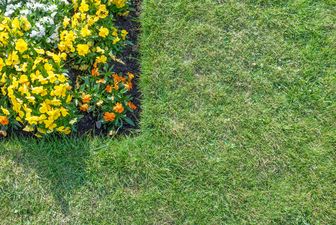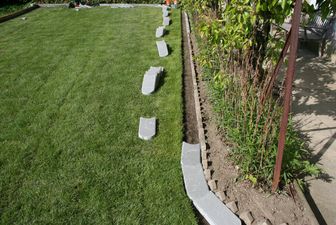We show you how to properly cut lawn edges and what to look out for.
A lawn edging is the transition between the lawn and the garden, beds and walkways. It can be created by precisely cutting the grass or by edging it with stones and plants.
In addition to appearance, the lawn border also serves other functions:
it makes it easier to mow the lawn.
It prevents grass from growing in the beds and spreading further into the garden.
It prevents grass from starving garden plants of nutrients and water.
The English lawn border
Many home gardeners prefer the so-called English lawn border: a smooth transition without boundary stones, which is achieved by cutting the grass cleanly. Depending on the type of turf (fast-growing mixtures or heavy runner formation), this work takes place about every four to six weeks.

Here’s how to level the lawn edge the English way:
Prepare a sharp lawn edger or spade. Sod cutters usually come with a semicircular cutting disk and a long handle with a T-handle, which makes the job easier. Make sure the cutting edge is always sharp. This allows you to trim the edge with less effort while protecting the turf and your back. Instead of a lawn trimmer, you can also use any spade with a sharp blade. The wider the blade, the faster you move.
For longer edges, stretch a string to make a straight line.
Trim the edge of the lawn neatly with the lawn edger or spade.
Remove any cuttings. The cut grass can be composted as garden waste or used to repair damaged areas of the lawn.
Over time, a lot of soil is lost through repeated leveling, so the grass becomes visibly higher than the edge. So top off the edges with garden soil once a year.
Stone borders
In this variant, you dig a ditch about 20 cm deep between the lawn and the bed or paths. Fill in the bottom with sand and place the border stones. To ensure that the top edge is in the right position, stretch a mason’s line to the desired height. The sand and stones will prevent the lawn from spreading.

Plants as a natural lawn border
A border of flowerbeds and shrubs can also be used to define the lawn. Use compact, low-growing plants such as dwarf lavender, thyme, speedwell or geranium. Once planted, your natural borders will prevent the lawn from spreading.

